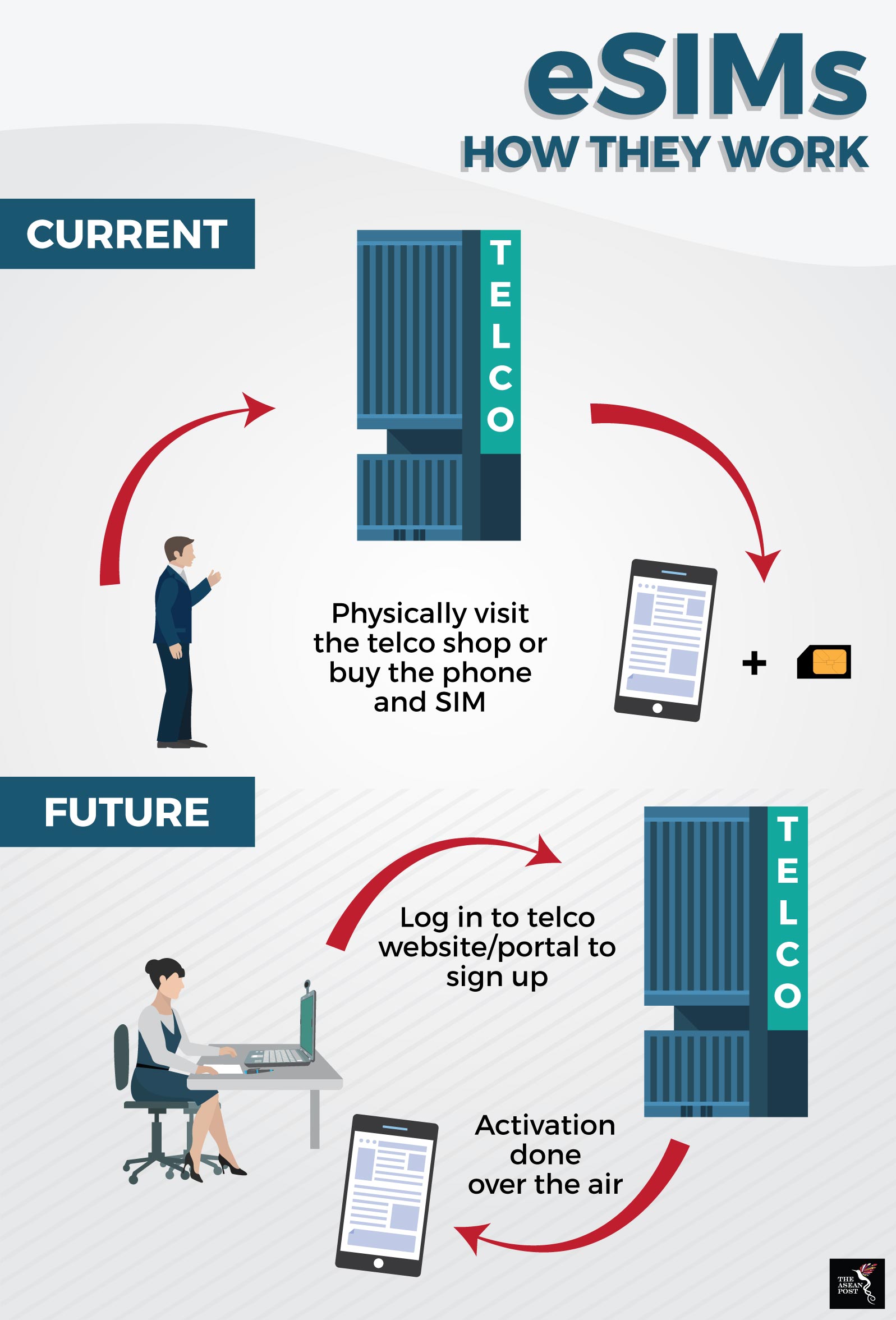It’s a familiar arrival routine at the airport. Clear customs, pick up your luggage, then scour available telco booths for the best available data deals. Upon selecting a suitable data plan, a friendly salesperson will extricate your existing SIM card and swap in a local one. What if you didn’t need to fiddle and worry about safekeeping your existing SIM? What if you could perform this process by simply scanning a QR code?
This is part of the embedded SIM or eSIM promise.
We’re all familiar with the innumerable articles and conversations about the Internet of Things (IoT), but there hasn’t been as much information about managing connected devices. In ASEAN alone, mobile connectivity reached 141 percent in 2018. The only other regions in the world that rank higher are Eastern Europe at 157 percent and Southern Africa at 147 percent, respectively.
An embedded SIM or eSIM is a chip that is soldered directly into a device. Since it cannot be removed, smartphones, laptops and tablets can be hermetically sealed. It’s also considerably tinier; a nano SIM takes up 12.3mm by 8.8mm, while an eSIM only requires 5mm by 1mm (before taking into account deletion of SIM slots and other relevant hardware). At last year’s annual COMPUTEX Taipei (Taipei International Information Technology Show), Microsoft was hard at work promoting “always connected” computers. Combining eSIM technology and constantly improving data connections, Microsoft wants to sell PCs that can just as easily stream a YouTube video from a road side stall or a Wi-Fi enabled city centre sports bar. Not a new idea, but one that’s fast becoming a reality with modern modems. This scenario could become a reality sooner than you think as smartphone manufacturers like ASUS, Huawei, Lenovo, Sony and Xiaomi, and computer brands like Dell and HP, are pushing for this new technology.
Disruptive nature
An eSIM is telco-neutral. Not only will it offer people the unparalleled convenience of being able to switch cellular networks seamlessly, but also the freedom to upgrade or downgrade accounts from pre-paid to post-paid plans with minimal fuss. A new subscribers-market may emerge, where only the best priced plans survive. Consider too, that markets with no upfront subsidies for new smartphones will likely see telcos having to amend their business strategies since users might buy directly from vendors without having to visit a telco shop.
Furthermore, the market could open up for newer, smaller, telco players. Picture using a particular 4G network that only covers urban and city-wide borders with super-fast data speeds. Then switching to a telco with national coverage if and when you venture into the countryside. The cost savings on infrastructure and logistics would be immense for newcomers. And long established telcos will have to offer more value and better services to ensure long-term commitments from customers.
Adoption of eSIM technology will also accelerate the decline of roaming charges, according to a 2017 ASEAN focused telecommunications report by the DBS Group. While unconcerned with customers who traditionally endure the hassle of switching to local SIM cards, the subscriber base for international roaming may be tempted to use a local operator. In theory, the process would be as easy as downloading the mobile network operator’s profile over the air by scanning a unique QR code. The eSIM would contain the contract details of the consumer and determine the connectivity provisioned for the device.
In addition, eSIMs allow for slimmer smartphone designs that could have enhanced dust- and water-proofing capabilities. And because eSIMS are part of the silicon fabric, they’re able to withstand vibrations, shocks and physical attacks from probes and x-rays better than a traditional SIM card could.

Source: Various
Despite the hype
The over-the-air provisioning of operator profiles requires a standardized architecture to be agreed upon and adopted by all ecosystem participants. Under these conditions, mobile users can expect traditional SIM cards and eSIM technology to co-exist for an extended period of time. In regions like ASEAN where countries are in various stages of development – OpenSignal’s recent world rankings of countries with 4G availability, ranked Thailand highest in ASEAN at 15th place and Myanmar in 76th spot – traditional SIM phones and devices are still in great demand.
And at the end of the day, telcos will still have control over who connects to their network. They will calculate the costs and decide what to charge consumers and under what packaging rules. Plus, users don’t only want cheap data, they want more of it delivered as fast as possible. Only high-quality data networks can provide this. Singtel already proclaimed the eSIM usable on its 4G network as of January last year, while Thailand recently launched its first eSIM smartwatch.
Regional telcos are always offering the best digital experiences possible, developing multidevice-bundling and shared data plans. They too recognize the eSIM opportunity as the perfect vehicle to expand their sales channels beyond physical boundaries.
